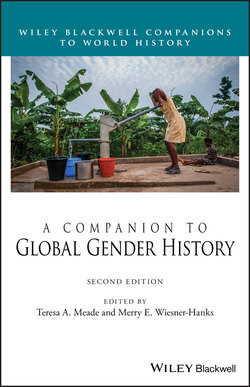Читать книгу A Companion to Global Gender History - Группа авторов - Страница 17
Early Human Societies and the Emergence of Gender Divisions
ОглавлениеAlthough scholars have debated the origins of women’s subordination within the gender division of labor, they have discovered that gender divisions appeared long before modern capitalism came on the scene (Hartmann, 1976, 1979). But the nature of those gender divisions in early hominoid societies has been subject to debate. Anthropologists long believed that men provided the bulk of the food supply by aggressively hunting big game in hunter‐gatherer societies, whereas women primarily gathered food. However, recent studies point to a more balanced division of labor. Scholars studying evidence from physical and social anthropology and archaeology have argued that early humans subsisted primarily on vegetation gathered by either men or women and that both men and women hunted large game as well as small animals (Leacock, 1987; Arden, 2008). Archaeological evidence from the North America Dakotas suggests that women engaged in tool‐making, long believed to be a male specialization. And evidence from the Middle East points to flexible, relatively egalitarian roles of Neolithic farming communities (Bolger, 2010). By the sixteenth century in the Iroquois and Seneca communities of North America, women farmers provided the bulk of their communities’ food supply (Jensen, 1994; Brown, 1975) and in other Native North American groups, such as the Plains Indians, women’s participation in game drives and hunting was crucial to the survival of their communities (Klein, 1983). Early human societies also relied on cooperation between group members in food gathering, fishing, and distributing food, often lending women high status in their communities (Leacock, 1987; Goodale, 1971; Estioko‐Griffin and Griffin, 2000; Brettel and Sargent, 2000: 251). More clear‐cut gender divisions emerged over many thousands of years.
